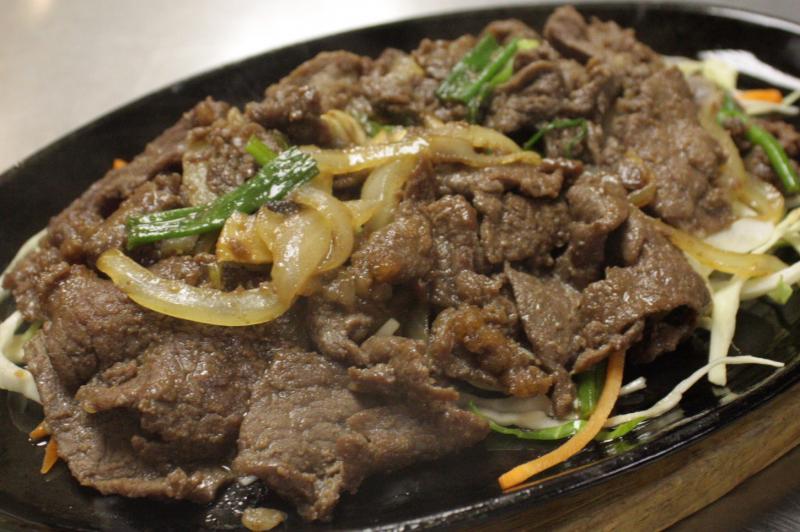SOUTH KOREAN FOOD (한식)
During the fall semester of 2014, I studied in Korea. I was introduced to Korean food here in the states but nothing compared to the food there!
Rice was a key staple. Freshly fermented kimchi was served with all meals. Different scents and flavors filled the room.
As a foreigner trying new foods in a new country can be difficult. The key is to have an open mind and be ready for anything that comes your way! You never know, it could be your next favorite meal!
The biggest question is, where do I start? My recommendation is to try something on the safer side before going and trying crazy things, like live squid (which is surprisingly DELICIOUS!!).
 1. Banchan (반찬)
1. Banchan (반찬) Korean side dishes that come with every meal. They range from kimchi, to pickled radish, to seaweed, etc.
(http://elpasoseoulrestaurant.com/images/Korean%20side%20dishes.jpg)

2. Bulgogi (불고기) / Galbi (갈비)
These two dishes are very common to start off with when it comes to trying Korean food! They both are a type of beef that are marinated and grilled. Bulgogi is thinly sliced beef placed on a hot stone plate and Galbi still has a bone in it. They are served with rice and bon chon (Korean side dishes such as kimchi, fermented beans, pickled radish, etc)
Bulgogi (above)(http://kimchistatecollege.com/yahoo_site_admin/assets/images/IMG_2110.20125907_std.JPG)
Galbi (below)(http://s3.amazonaws.com/foodspotting-ec2/reviews/2490733/thumb_600.jpg?1348974564)

3. Bibimbap (비빔밥)
This is yet another common dish for foreigners when they are first experimenting with Korean food. It is a combination of rice, meat (typically beef), and vegetables. You can order it hot or you can order it cold (dolsot bibimbap 돌솥비빔밥)! It is topped with a cooked or raw egg (depending on if you get it hot or cold). It is served in a hot stone pot! To complete the dish, you add gochujang (고추장), a spicy red pepper paste.
(https://greenhorngourmet.files.wordpress.com/2012/10/dolsotbibimbap.jpg)
4. Kimbap (김밥)
Possibly the most common, cheapest, and filling! This is what some refer to as "Korean Sushi," even though it really isn't. The most basic form of kimbap is with rice, spam, pickled radish, cucumber, and a few other ingredients. It is rolled in seaweed and costs approximately $1! Can't beat that price!
(https://blogger.googleusercontent.com/img/b/R29vZ2xl/AVvXsEhGop8QJSIDgWmAgUb85q11lvdGtBzrATNao9yFxPVv-MXyhjqV-sjhLkw1CD3o9h7cMzlvA6bRivKrNzk7LwZ1c7DkfDmLtVgQUFwxrrTZpZJmgJB-9jkUc5iapI780cR_4QHV4FDPxaQ/s1600/kimbap1.jpg)
Of course these are in no way, shape, or form the only foods you can try out in South Korea! Street food is a great start as well!
A traveler tip though, if your stomach is anything like mine and cannot handle a major change in the way food is processed, make sure you stay hydrated and try to eat as much as you can. I had to eat only rice for the first week until I could fully adjust to the new foods.
After experimenting with some basic foods, try moving onto different foods! Next week I will talk about "intermediate level" foods! I will also later touch upon things like drinks, foods from different regions, craziest things I've tried, etc!
























